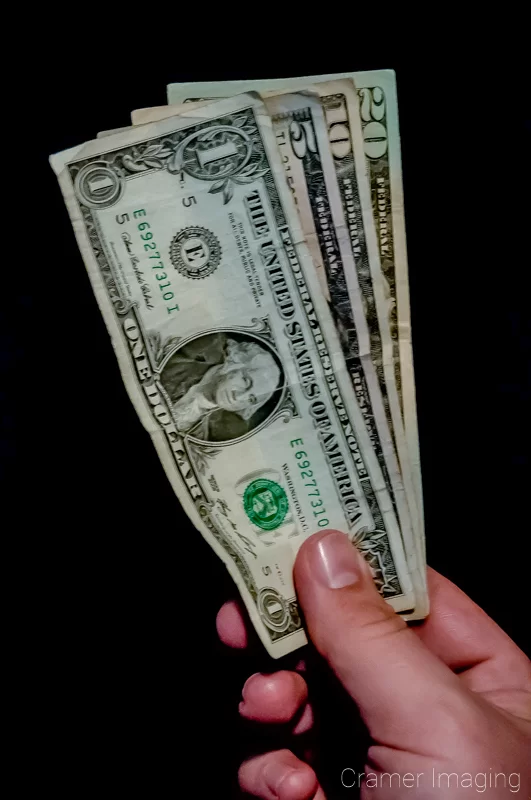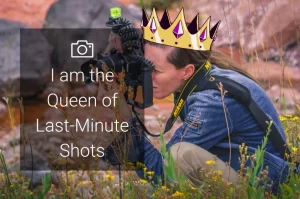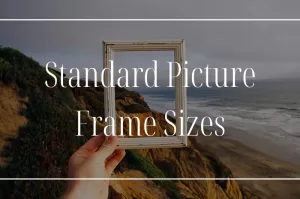So you want to get some decent fine art for your house but you’re finding that the kind of art you want is rather expensive. It doesn’t seem fair since you can buy mass-produced prints from Walmart for a lot less. Why is it that some kinds of artwork are just so expensive but mass-produced art is so cheap? Today, we investigate.

So why is fine art so expensive? Why do we see price tags with lots of zeroes at the end? The short answer is because it takes a whole lot of time and effort to produce. Depending upon the kind of art you are talking about, creating it might require so much time that the artist will find it difficult or impossible to create it AND make a living (regular employment).
For fine art photography like mine, my cost of creation can be high. However, for one-of-a-kind art (like sculptures and paintings), the cost of creation can be much higher. Also bear in mind that, unlike photographs, most other forms of art are one-of-a-kind.
Still confused? How about this very real-life example to illustrate things better for you?
A Real-Life Example of Art Being Expensive
An acquaintance of ours was once remarking how little he knew about fine art. He had been talking to a friend of his who had painted and was selling a large painting (I don’t know the dimensions). Not understanding anything about art, he thought $75 would be a reasonable price to offer for it. He was taken back when she was insulted by that price. She politely explained to him that her price for that size of that hand-painted art was closer to $600.

Analysis
As you probably expect, our acquaintance had a bad case of sticker-shock with that quoted price. He didn’t end up buying the painting because of it and didn’t understand why she had such a huge price tag attached to what seemed like such a trivial piece of art. He was asking the question “why is art so expensive?”

What this acquaintance of ours failed to realize is that the artist’s efforts in creating the painting were not trivial at all. In fact, his friend confessed she had spent over 15 hours on that painting. Her time is not the only cost attached to creating the painting in question. Some other costs to consider are that the canvas would probably cost around $20 or more, and the paint would probably cost at least another $10.
With these added (and very real) costs added in, $75 for the painting would leave a maximum of about $45 (or about $3/hr) to pay for her highly skilled and talented efforts in creating a one-of-a-kind painting. For a frame of reference to those who don’t know, a minimum living wage is currently considered to be more than $7/hr and even greater in some parts of the country. Obviously, that isn’t a reasonable fee for that much work on her part.
With selling her art at a much higher price of $600, she could not only pay for her time and supplies but also pay for all the time she put in in art school and pay for all the practice pieces she created on the way to creating the painting she was selling. Artists trying to live on their art have to charge enough to cover all of that plus get enough to live on.
Why Mass-Produced Reproductions are so Cheap

So, back to those cheap Walmart prints. You and I both know that those kinds of pictures are far from what we would call “fine art.” Those pictures are produced for pennies each, using cheap and poor-quality materials, in automated batches of millions. Then companies such as Walmart slap a price tag of something like $10 on each print where they can make a huge profit off sales.
While this mass-produced picture industry might make works like Van Gogh’s famous “Starry Night” much more accessible to the public to enjoy, these prints are far from the original. The mere seconds it takes to print or stamp a cheap lithograph cannot compare to the original painting by the artist’s hand.
It really is that simple why mass-produced pieces of “art” (very subjective here) are so cheap. It’s because they can be. They require very little in the way of effort to create and can be sold to a mass market for much cheaper than original works of art can.
Creating Fine Art (of Any Kind) is Expensive to the Artist
Now that we have an idea about those cheap mass-produced pieces, let’s get back to serious art and why it is so expensive. Since I’m a fine art photographer, let’s start with fine art photography. To produce a new photo can cost a fine art photographer several hundred dollars even if the shot location is relatively local. It can cost several thousand dollars if the location is not relatively local. Here are some of the associated costs a photographer might face.

Some Costs a Photographer Might Face When Creating a Fine Art Photo
- Travel costs (gas, car rental, bus fees, airline fees, extra luggage fees, etc.)
- Vehicle maintenance
- Food costs (road food is more expensive)
- Accommodation fees (hotel, camping, etc.)
- Site fees/licenses (not all places to photograph are free to the public, in fact most of the best are not free to access)
- Photo editing software (mostly a monthly subscription now)
- Computer maintenance and upgrades
- Internet access
- Insurance

Fine art photography, sometimes considered one of the cheaper fine arts, is really starting to add up, isn’t it? This is not to mention the fact that most photographers can’t work regular jobs while traveling for photography. This scheduling nightmare limits the kinds of side jobs that fine art photographers can have and also means they have to take off time from any potential side jobs to pursue photography seriously.
All of this cost is for a fine art which can be mass-produced now thanks to digital photography and high-end photo printers. How about other forms of fine art which aren’t so easily duplicated?
Photography Isn’t Alone
Other forms of fine art have their associated costs as well. For example, painters have to buy canvases, paints, cleaning materials, etc. Many travel to paint as they view actual locations and/or people. They must have a place to paint. Maintaining their equipment (brushes, etc.) requires special materials too. Also consider that, while you CAN create prints from paintings, you only have one of each original painting.

Sculptors need their medium of choice (clay, metal, rock, etc.), kilns, tools and more. Also consider that, while there are ways to mass reproduce sculptures, reproducing a single sculpture is even more involved than such efforts are with paintings.
Photography, painting, and sculpting are far from the extent of fine arts out there, but each fine art comes with massive associated costs with nearly all aspects of creating art, no matter the medium. The final purchase price of the product reflects these costs as well.
A Final Consideration with Price
We haven’t even talked about the fact that professional artists need to actually pay themselves.
Hold the phone, who said anything about capitalism here?!?

Please remember that nobody works for free. You would probably find insult (and flatly refuse) if I asked you to work for free for hours, days, weeks, or even months at your job. Some artists even spend years working on a single piece. If you wouldn’t be willing to work for free for an extended period of time at your job, why would you ask someone else to do the same? Asking someone to work for dirt cheap (like $3/hr on a 15 hr large painting) is practically the same thing.
Many many years ago, there was a different solution to the money-side of art. An artist would find a rich individual or family (patron) who would support him/her financially and allow him/her to create art. Oftentimes, the patron would then take ownership of most or all the art produced in exchange. We call this arrangement patronage. Since patronage has essentially gone way the way of the dinosaurs, professional artists actually must make a profit in order to live.

Without patronage, professional artists have a significant problem. Since fine art is generally so time-consuming, those trying to live as professional artists need to also pay themselves so they can survive and also keep producing wonderful art for you to enjoy. “Exposure” and “for the art” or other such lines don’t put food on the table or a roof over your head. Society’s current attitude towards the subject doesn’t help the matter either.
Any regular jobs artists take are usually part-time and on-the-side to supplement the art they create. These jobs have must allow the fine art photographer scheduling flexibility for travel. Other artistic mediums can impose their own limitations on an artist’s ability to create and to make money outside of art. The final asking price reflects all of this.
In fine art, as in any business, you have to charge enough to pay all of your business expenses, as well as pay yourself and all of your employees. If you can’t do that, you will go out of business quickly. No one wants that to happen to themselves. This is why art is so expensive.
Conclusion
Fine art is expensive, because it is expensive to create. It is not generated off a massive printing machine by the thousands for a low-quality print. Quality fine art made either one-at-a-time, or in small batches to exacting standards. It is beautiful, rare, and difficult to produce. Such difficulty is a part of the final price tag. The more difficult the art is to create, the more expensive the price tag attached to it. It’s really just that simple.
Now that you’ve got a better appreciation for why art is so expensive, you might want to check out my online store. My prices aren’t anywhere near $600 (unless you want a giant-sized print both matted and framed). You might pause to consider what I went through just to get each photo you see displayed. Several took more than 1 trip to get right. Just follow this link and check it out.



